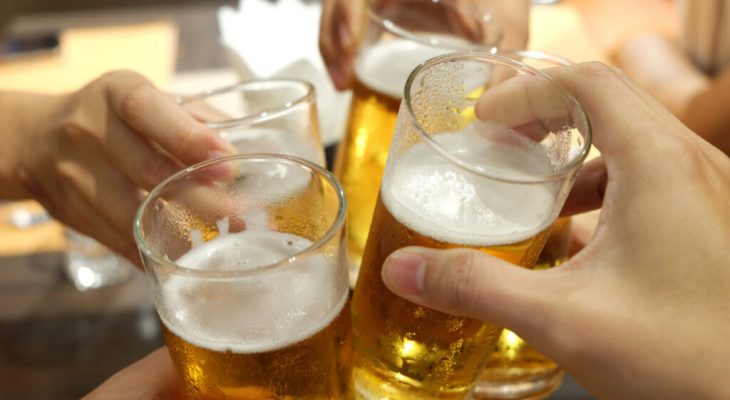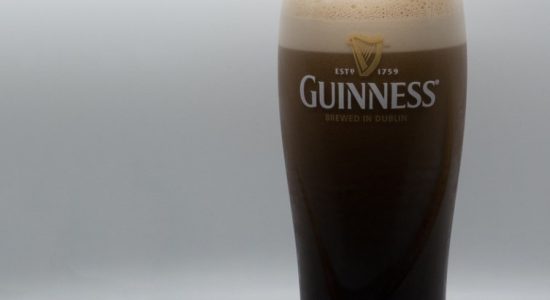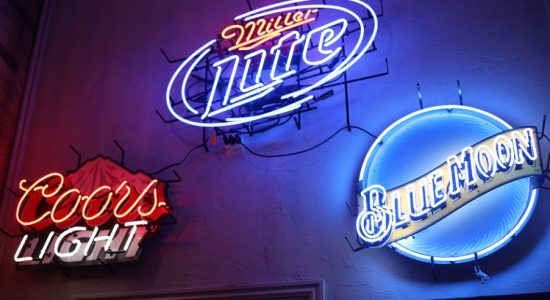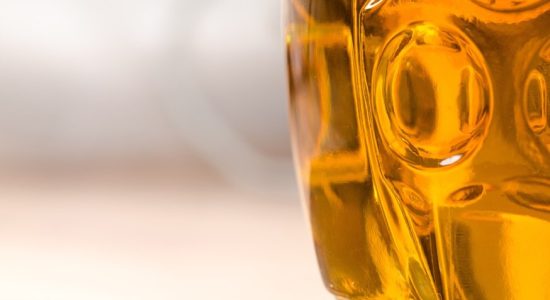What is Lite Beer? (All about Lite Beer!)


If you’re familiar with American beer brands, you’ve probably heard of beers like Miller Lite, Bud Light, and Coors Light. But why are they called “light,” and what makes these different from other types of beer?
Lite beer is a pale or golden colored lager beer with fewer calories or a lower alcohol content. The primary definition of lite beer in the US is a beer with fewer calories. The beer is made to have fewer carbs. Lite is a marketing term for Light beer.
Light beer must meet certain requirements to be considered light beer, and different methods can be used to make beer lower in calories.
What is Lite Beer?

The first use of the term “light” in beer marketing was way back in the 1940s when the Coors Brewing Company sold Coors Light, for a short period before World War II.
It was relaunched more successfully later in 1978 as a 4.2% ABV (alcohol by volume) pale lager.
In 1967, the Rheingold Brewery marketed a 4.2% pale lager called Gablinger’s Diet Beer, which was developed by Joseph Owades as a beer for dieting people. The endeavor was not successful, and the recipe was given to Peter Hand Brewing Company of Chicago, who sold it as Meister Brau Lite.
After encountering financial problems in 1972, they sold the Meister Brau line of beers to Miller Brewing Company, which later relaunched the beer as Miller Lite.
Coors Brewing Company, after having long stopped producing light beers, reinvented itself and launched Coors Light in the 1970s. Budweiser Light launched its own light beer in 1982 in response to Miller Lite.
Bud Light went on to become the best selling light beer brand in America.
Today, Coors Light, Miller Lite, and Bud Light hold the largest market share in the light beer category. Miller Lite has the lowest calorie content followed by Coors Light and Bud Light.
Light beers are often chosen by beer drinkers who wish to manage their alcohol consumption or their calorie intake.
Lite Beers are (wrongly) critized for lack of taste?
They are sometimes criticized for being less flavorful than full-strength beers, and for tasting, or actually being, watered down.
Although some claim light beer is less flavorful, others see this as a common misconception surrounding light beers.
Some disagree with how they are categorized as non-alcoholic, flavorless, bodiless, fizzy, or lacking aromatic complexity.
This crowd maintains that it is possible for light beers to be as flavorful, crispy, or creamy as a regular beer, since the “light” just refers to the low number of calories.
Read Also: 6 Key Differences on Craft Beer vs. Regular Beer
Reduced Alcohol in Lite Beers:
One difference between light beer and regular beer is the alcohol by volume.
Reduced calories generally also mean a reduced alcohol content. Many (but not all) lite beers have a significantly low alcohol content with some going as low as 2.3% ABV, although most lite beers are closer to 4.2% alcohol content.
Most regular beers on the other hand fall closer to 4.1%-5% ABV.
Lite beers with lower alcohol content appeal to many because they allow drinkers to consume more beers within a shorter time frame without becoming intoxicated. Lower alcohol content can also make beer less expensive, especially where excise tax is determined by ABV.
Reduced alcohol is the primary definition of light/lite beer in countries such as Australia and Scotland.
In Australia, regular beers have approximately 5% alcohol by volume while light beers generally have 2.2–3.2% alcohol.
Read: Does more Sugar in Alcohol means higher ABV? Everything about Alcohol and Sugar
Reduced Calories in Lite Beers:
Reducing the caloric content of beer can be achieved by reducing the carbohydrate content, as well as by reducing the alcohol content.
This is because both carbs and alcohol contribute to the calorie content of beer. Reduced calories is the primary definition of light beer in the United States, where the spelling Lite beer is also commonly used.
Light beer is required to have a certain calorie and alcohol content in order to be considered “light,” although the requirements are loosely held.
Regular beer is generally about 150 calories per 12-ounce serving, while light beer is between 50 and 100 calories. Essentially, a light beer should just have fewer calories than its original beer counterpart.
There is no industry-wide standard of the number of calories a light beer should have, but a beer is only considered light if it has fewer calories than its regular version.
How is Lite Beer Made?

Lite beers are made using slightly different methods than other types of beer in order to achieve the goal of containing fewer calories. Below is a run-down of some of the different types of methods used to make light beer.
Light beer is made using one or a combination of four methods:
#1 Diluting:
This method involves mixing regular beer with water to dilute the beverage so that it meets the alcohol and calorie requirements of a light beer.
#2 Prolonging the Mashing Process:
Mashing is the process of mixing the grain with water at a specific temperature to transform the grain into the proteins and sugars that are then fermented into beer.
Lengthening the mashing process allows more of the carbohydrates in the grains to break down into simple sugars, making for fewer carbs in the beverage. The fewer carbohydrates there are in the beer, the lower the number of calories. The beer is then diluted with water, resulting in a light beer.
#3 Using External Enzymes:
Some brewers introduce enzymes during the mashing or fermenting stages of the brewing process in order to break down as many carbs as possible into simple sugars. These sugars are fermented into alcohol and CO2, and the alcohol is later diluted with water to create a low-carb beer.
#4 Smaller Servings:
This method does not involve diluting the beer or any changes in the brewing process or beer recipe and is merely serving a regular beer in a smaller bottle or can, normally half the size, in order to cut calories without changing the taste.
Read the guide: Are Homemade Beer Dangerous?
Whatever your beer preference may be, light beer is a great option for many beer drinkers and has proven to be a widely successful marketing strategy, especially in the Western world where healthy lifestyle and wellness trends have become so prominent.






